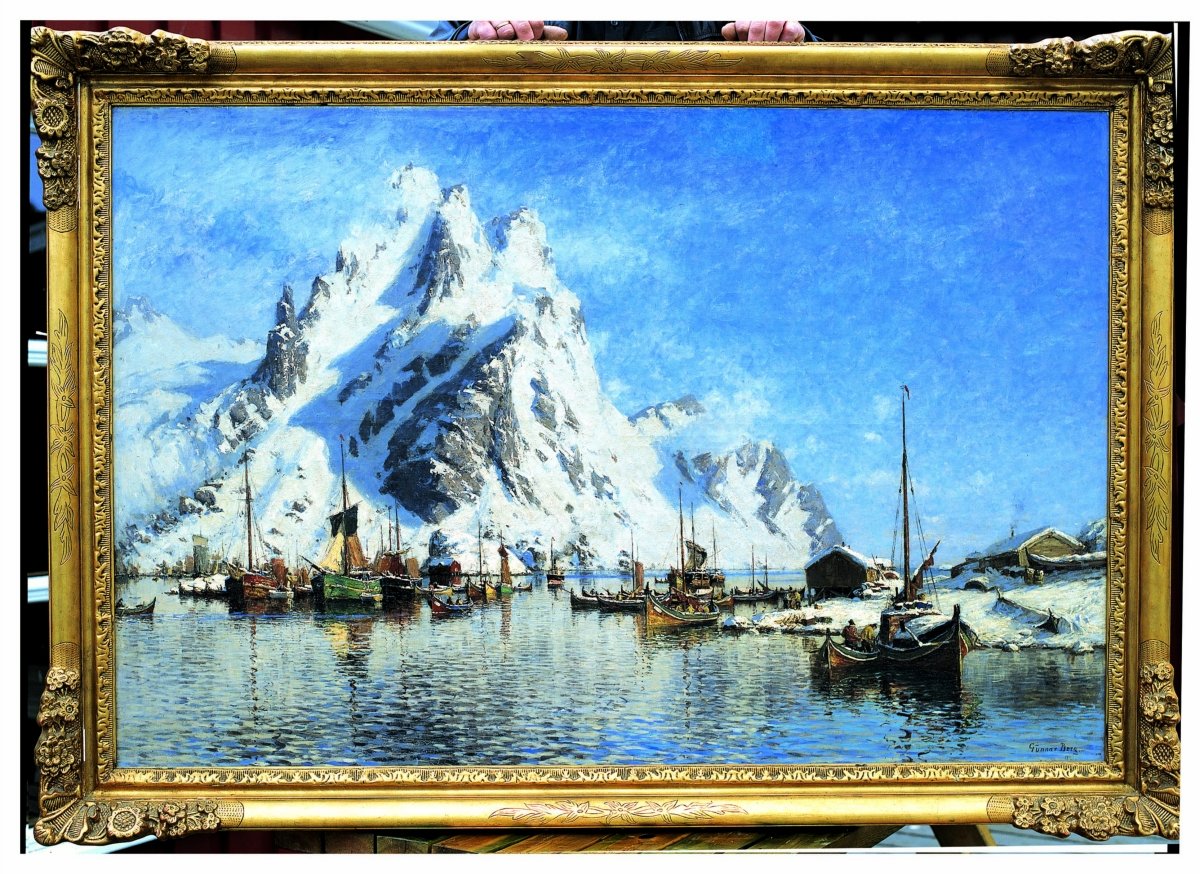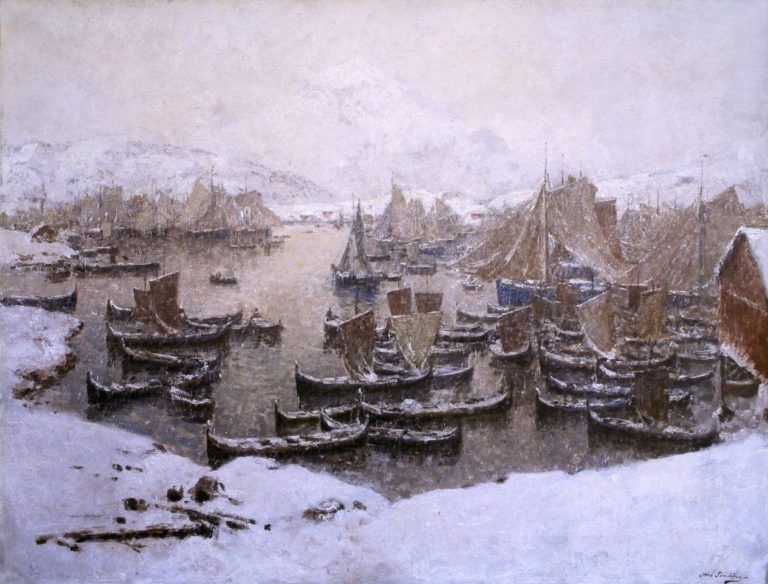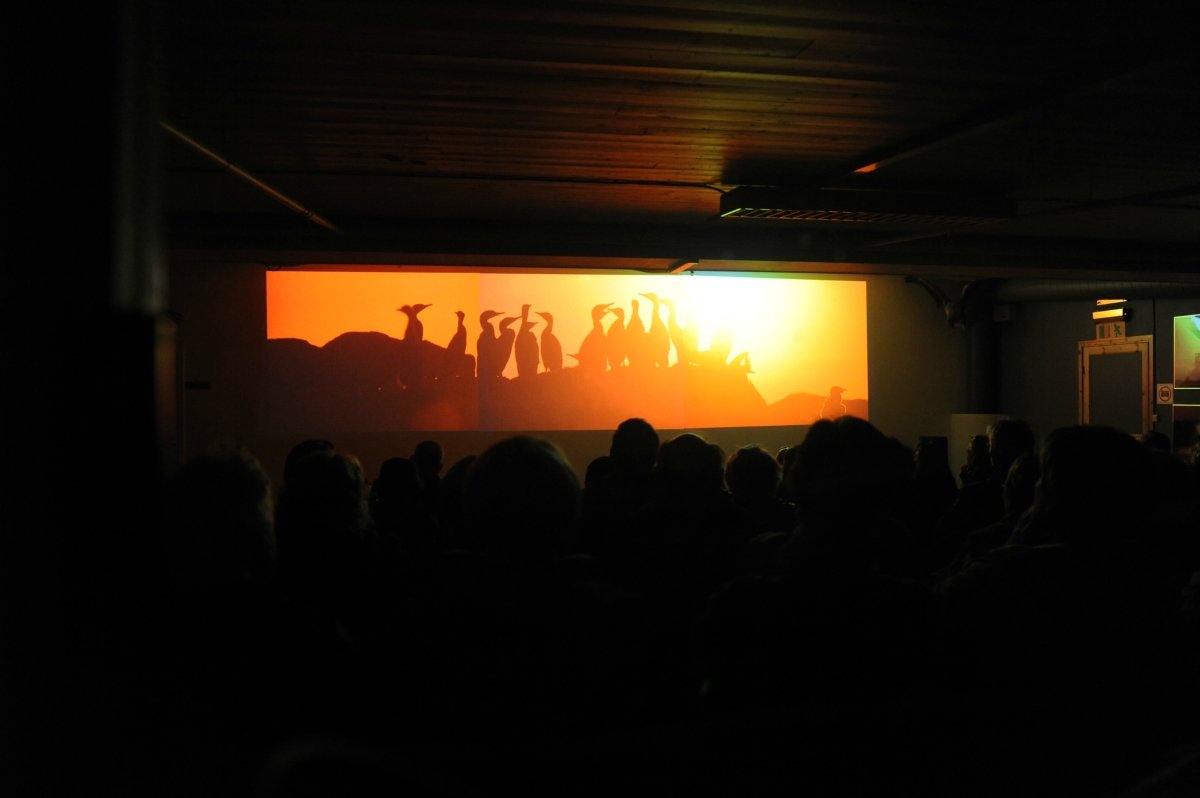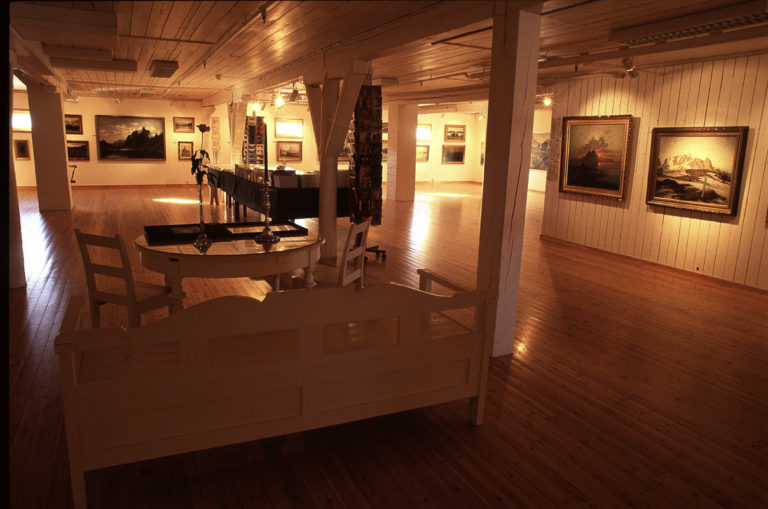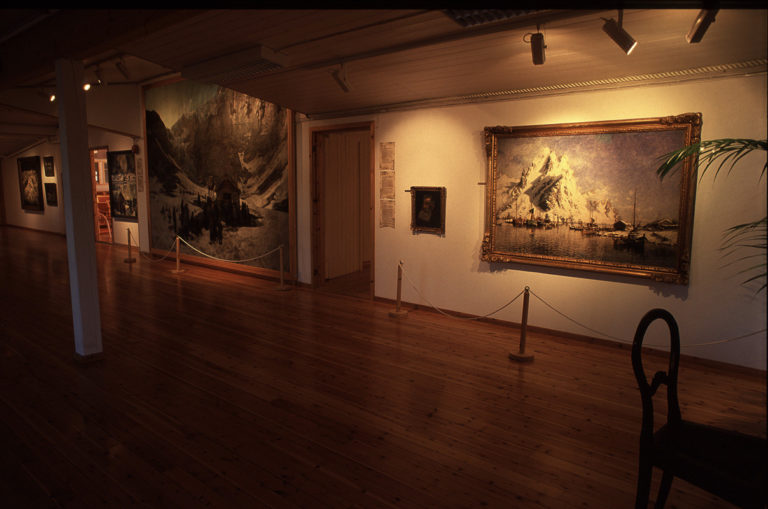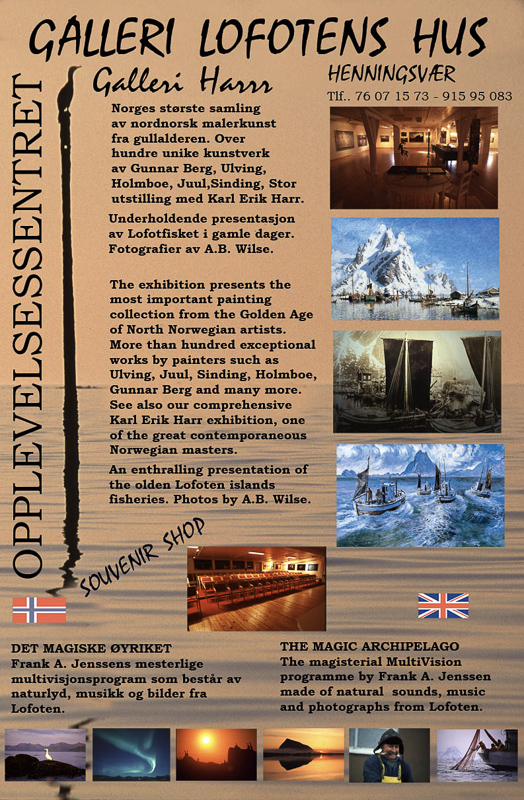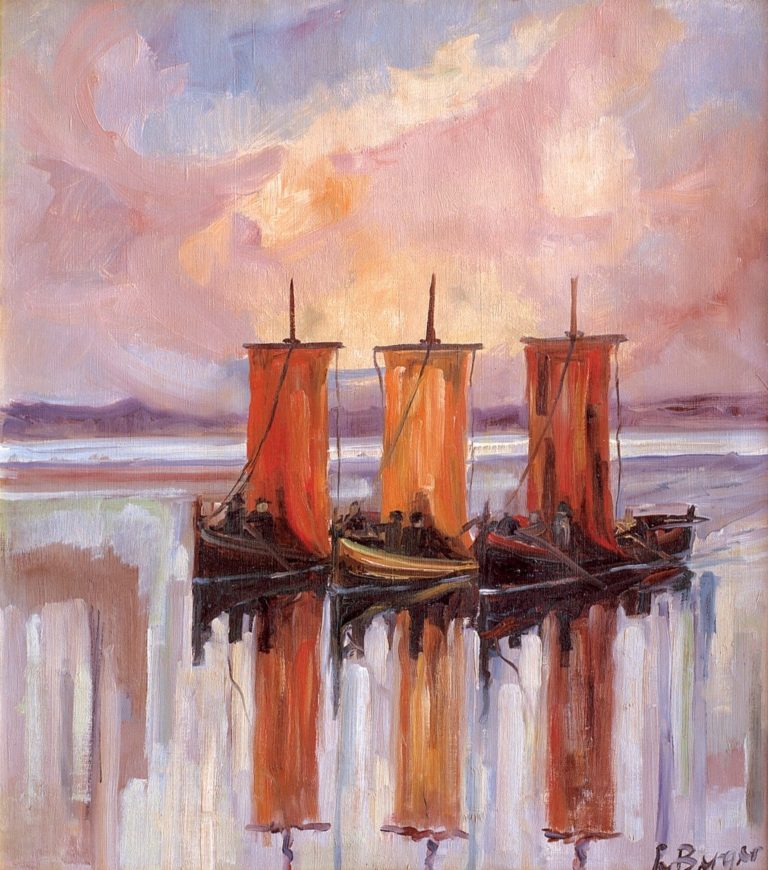In 1827, district governor Blom wrote that Lofoten was “completely devoid of beauty”. The wild, craggy mountains, the barren earth and the impoverished settlements of unpainted wood were far from the accepted ideas of beauty. Peder Balke painted the Lofoten landscape during his trip to northern Norway in 1832, but was largely ignored by his contemporaries and was first recognised long after his death. Lofoten was simply nowhere.
Lofoten’s breakthrough came in the late 19th Century
Only when the southern Norwegian artist Otto Sinding began to paint large panoramic pictures of the Lofoten landscape in the early 1880s did Lofoten become known. The pictures of Lofoten attracted attention when they were exhibited in Kristiania (now known as Oslo), as well as in Germany and Paris. They inspired other artists to travel to Lofoten, and the ground was prepared for the golden age. “From Reine in Lofoten” is exhibited in Galleri Lofotens Hus, while a later version hangs in the Norwegian Parliament. Other well-known works are “Funeral in Lofoten” and “Snowy Landscape from Svolvær”.
Practical information on Galleri Lofotens Hus
Henningsvær is in the Lofoten mountain chain in north west Norway and is an archipelago of islands connected by bridges. While driving through Lofoten on the main arterial route (E10) you make the detour to Henningsvær by taking the signposted turning at Rørvik onto route 816.
Galleri Lofoten have a great webpage with updated news and events.
Visit Lofoten is your go to webpage for all the information you will need about your visit to Lofoten.
The Golden age brought about some of Norway’s finest artists
Gunnar Berg from Svolvær is among northern Norway’s greatest artists, and in his short life, he painted some of the most famous paintings of Lofoten. “From the Port of Svolvær” hangs in Galleri Lofotens Hus, while the famous “Battle of Trollfjord” hangs in Svolvær. Even Ulving, Ole Juul and Thorolf Holmboe also belong to this generation, and are exhibited in Galleri Lofotens Hus. The mountains, the Lofoten fishery with street life, shacks and wharfs — the Lofoten painters became part of a distinct genre within Norwegian painting.
The golden age gave way to neo-romanticism
One of the painters, Karl Erik Harr, does not belong to the golden age. A most vibrant and productive contemporary artist, Harr belongs to the Norwegian Neo-Romanticists, and drowns in the wealth of motifs in northern Norway. Harr is hung in many galleries in northern Norway, on board Hurtigruten’s ships, on altarpieces and in town halls.
The Magic Archipelago is a journey through the Lofoten seasons
The slide show “The Magic Archipelago” is a contemporary journey through Lofoten — Hurtigruten in a storm in Vestfjord, fishermen in today’s orange oilskins, sea eagles diving for fish, whales, Northern Lights and the Midnight Sun against the sharp profile of Gimsøya. The photographer, author and writer Frank A. Jensen portrays today’s Lofoten through four seasons and in all weather. He drinks from the same inspiration as the golden age artists: the raw, gripping and magnificent scenery of Lofoten.
Lofoten is an artists playground
Galleries, studios, sculpture garden, glass workshop, art hotel, art smith, graffiti on garage doors — nowhere in northern Norway has been characterised by artists’ presence like Lofoten. A visit to the Galleri Lofotens Hus in Henningsvær shows you the beginning of Lofoten as a centre of gravity for art. The gallery is on a wharf in the heart of Henningsvær and might even have been a motif for Lofoten painters. The slide show is shown at set times throughout the day in the summer season.
